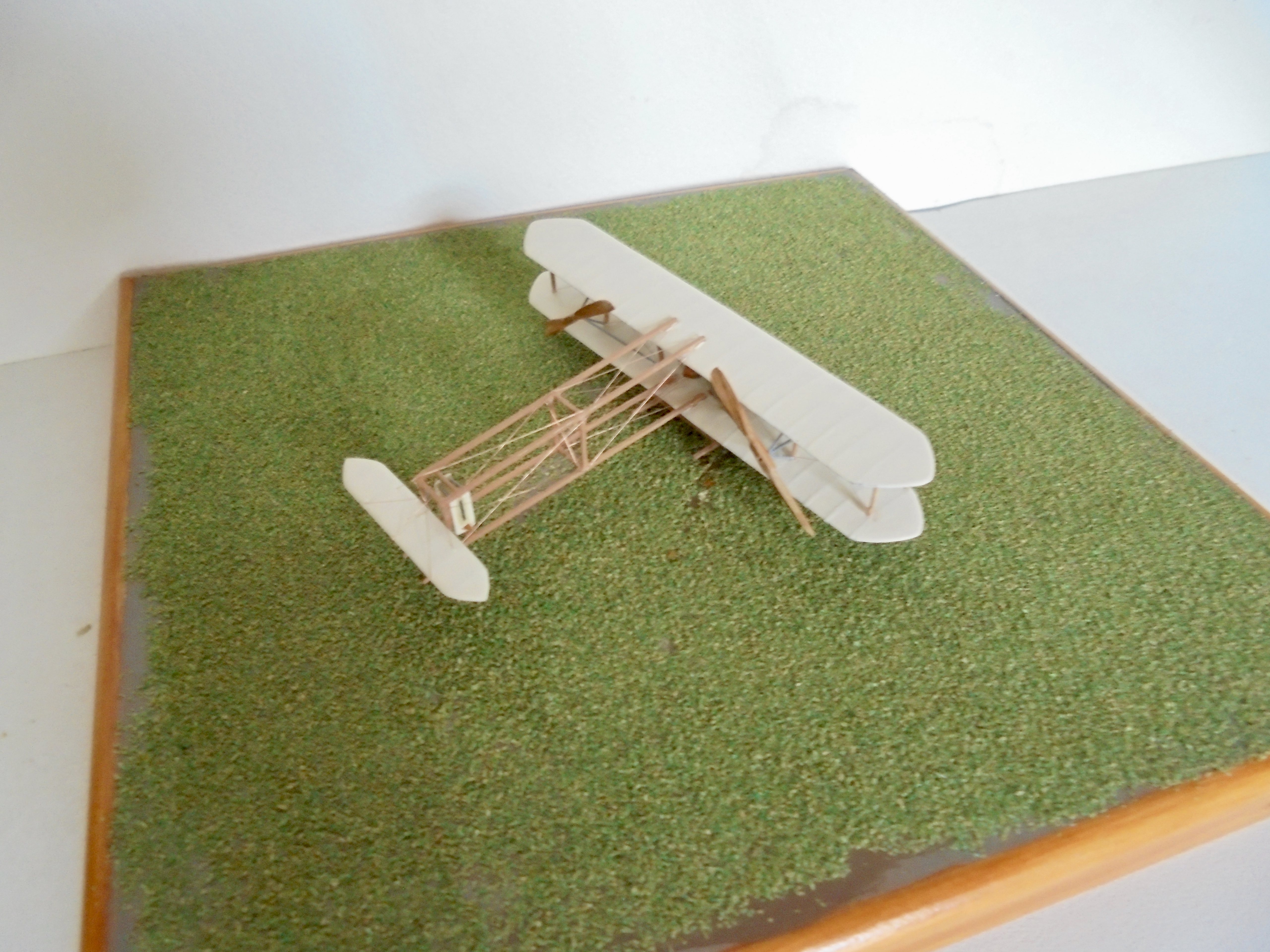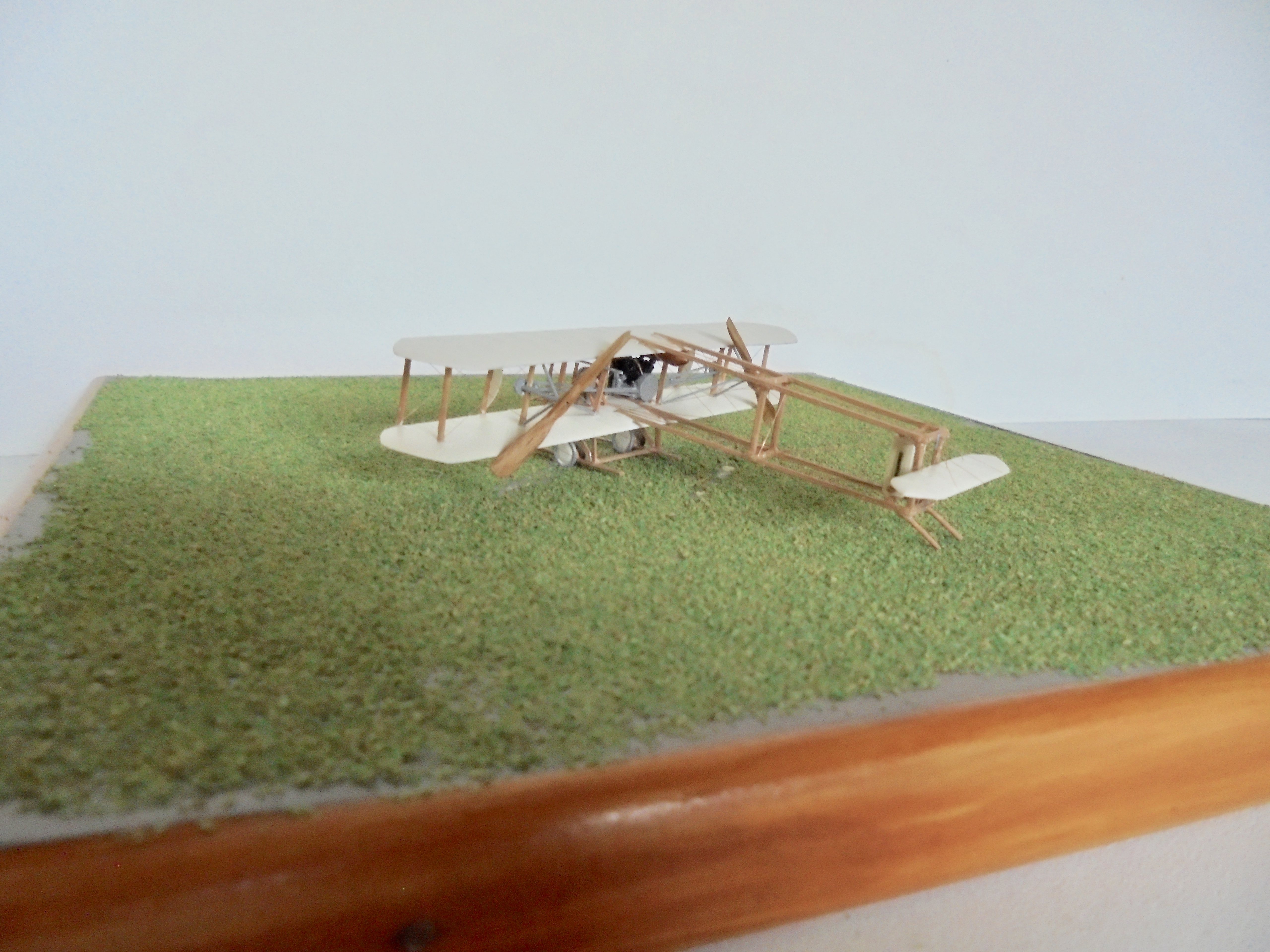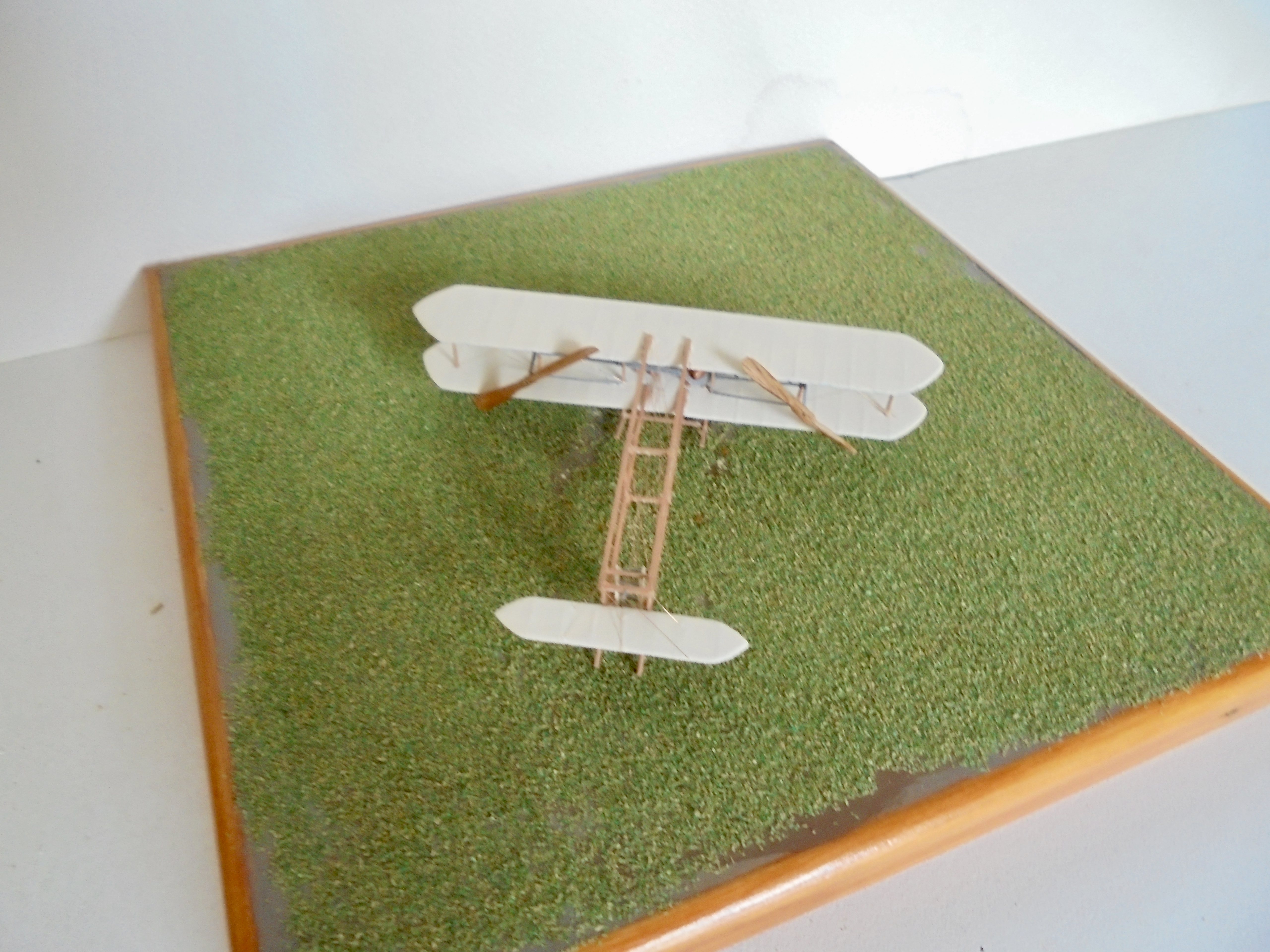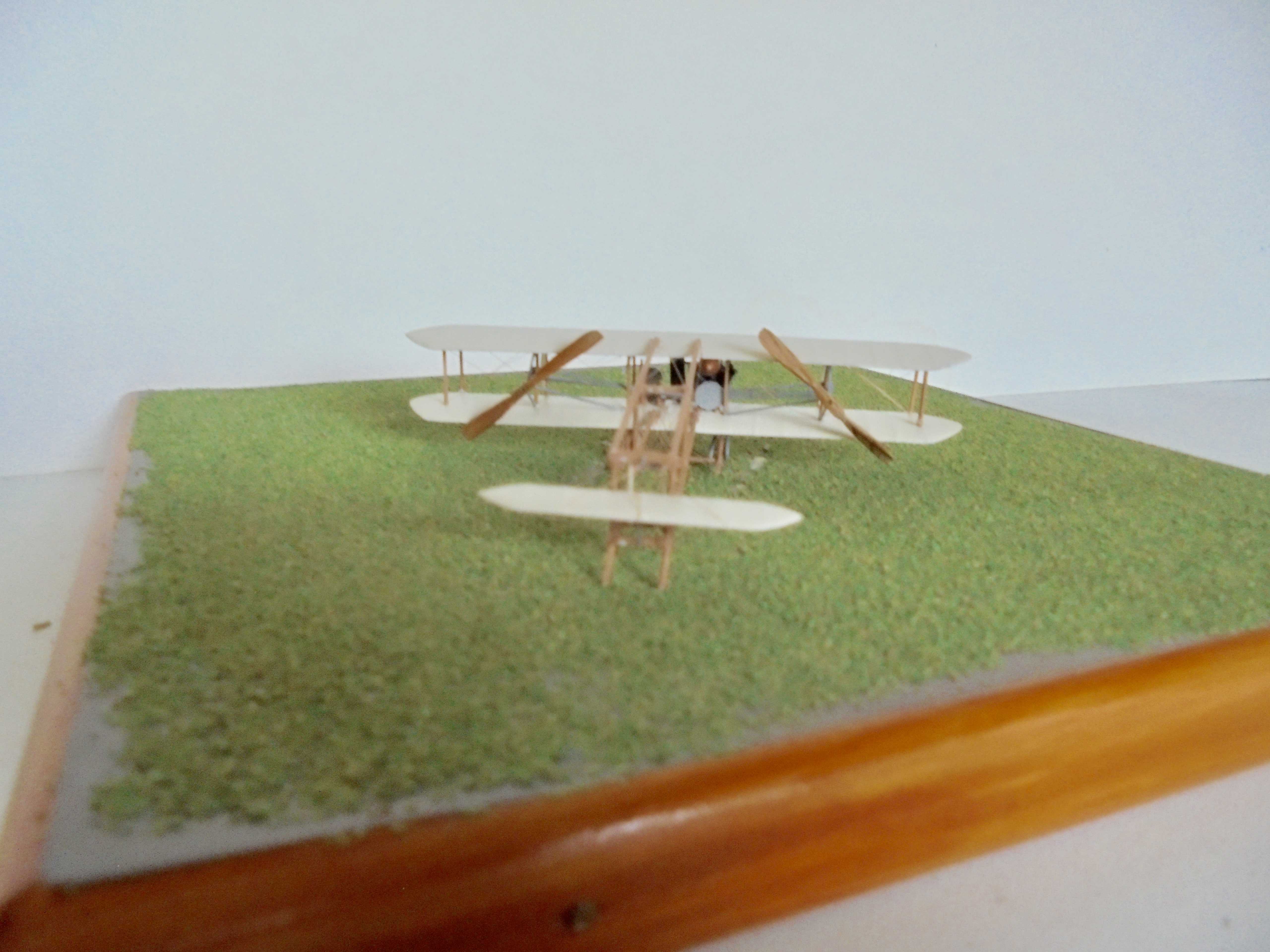Evening All,

The Wright Type R was also known as the “Roadster” and the “Baby Wright”. Two aeroplanes were built, one for the English flier Alex Olgivy. He flew it in the Gordon Bennett air race at Belmont Park New York in October 1910, where he managed to achieve 3rd place with an average speed of 55mph (88kph).


The second machine was taken to the race by the Wright Fliers (the Wright exhibition team), powered by a V8 engine: it was called the “Baby Grand”. It had a second pair of wheels attached to the front of the skids. This machine was smaller than Olgivy’s and consequently both faster but less stable. Orville Wright managed to achieve 70mph, (130kph), on 25th October and it was in line to win the race.


However on 29th October Walter Brookins was flying the machine when it suffered engine failure and crashed, causing much damage to the machine and keeping it out of the competition. Later the machine was rebuilt with longer span wings and Brookins flew it for exhibitions.

A. Ogilvy had his machined shipped to England where he flew it frequently at Camber Sands in South Kent. In 1911 he took it to the Short Brothers factory at Eastchurch where they fitted an NEC 50 hp 4 cylinder two stroke engine: many variations of radiator arrangements were also made. Ogilvy also invented the first practical airspeed indicator which he seems to have tested on this machine and used in the Gordon Bennett air race of 1st July 1911 which was held at Eastchurch on the Isle of Sheppy, Kent. It can be seen in contemporary photographs mounted on the interplane struts next to the pilot’s seat.


In the race Ogilvy knew that he could not win, but he participated nonetheless: he had to stop for 30 minutes during the race to refuel, thus increasing his time and reducing his average speed of 51mph (82kph). Ogilvy’s lack of success with his biplane in the competition against the smaller and faster monoplanes confirmed that the future of high speed flight would be with the latter.

Thanks for looking.
Stephen.